Crock Pot or Slow Cooker Yogurt
on Sep 17, 2017, Updated Apr 17, 2025
This post may contain affiliate links. Please read our disclosure policy.
It’s so easy to make silky smooth Slow Cooker Yogurt at home with just two ingredients and prep time of only 5 minutes! This simple recipe saves money, reduces waste, and delivers fresh yogurt without any additives or preservatives.
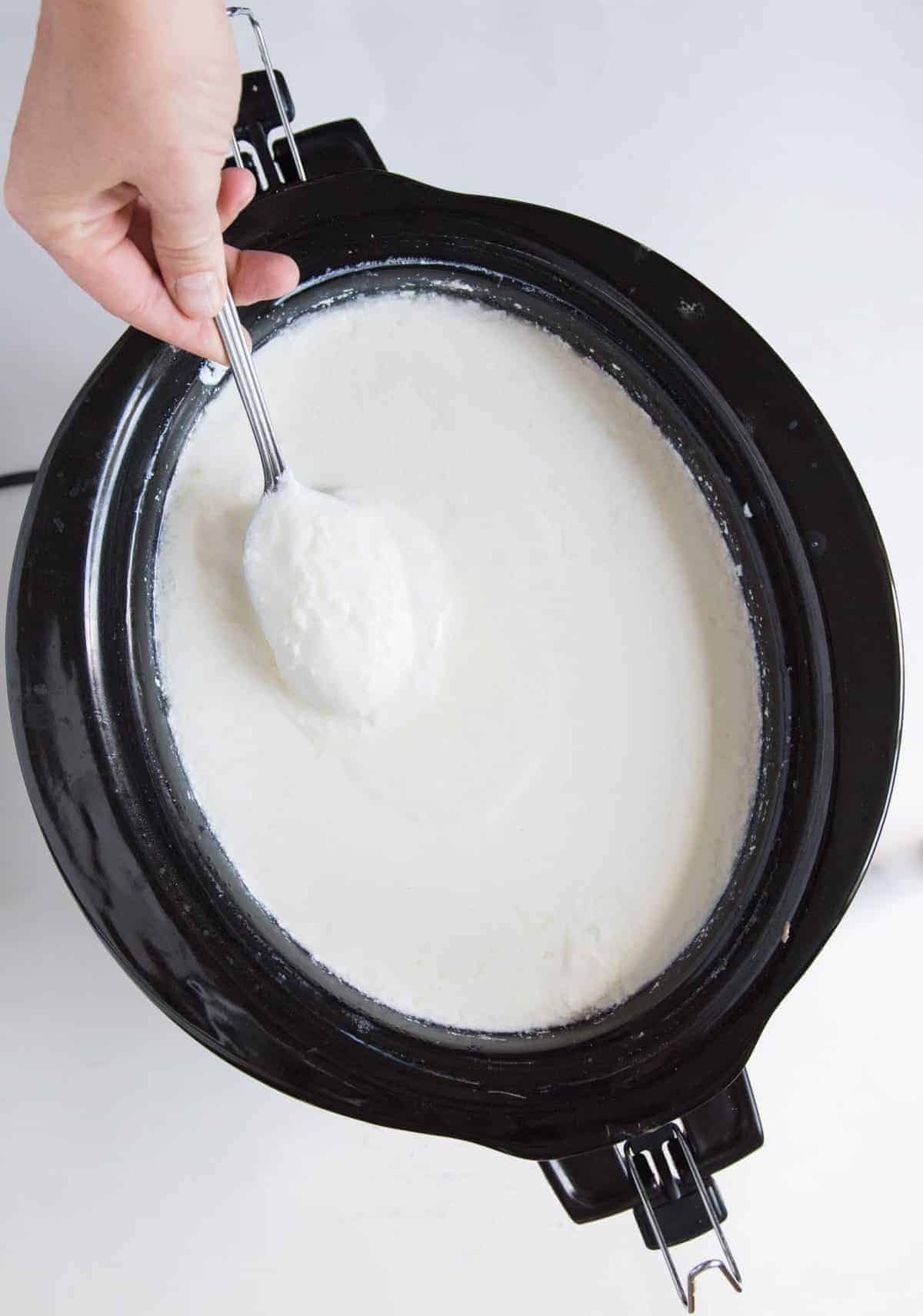
🥛Just 5 minutes of prep, and then slow cooker does the rest while you sleep. Such an easy way to get another option for homemade breakfast or snacks into your meal rotation!
My 2 Best Tips For Making Slow Cooker Yogurt
- Temperature Matters: The first time you make this recipe, use a thermometer to verify your slow cooker’s heating pattern. The ideal temperature for yogurt cultures is 110-115°F (43-46°C). Too hot and you’ll kill the cultures; too cool and they won’t activate properly.
- Quality Starters Make Quality Yogurt: Choose a high-quality plain yogurt with live active cultures for your beginning starter. Brands like Mountain High, Fage, or Chobani work well. Then you can start saving your own starter from each of your homemade batches. After a few batches, you may notice your yogurt becoming less thick—this is the time to introduce a fresh commercial starter.
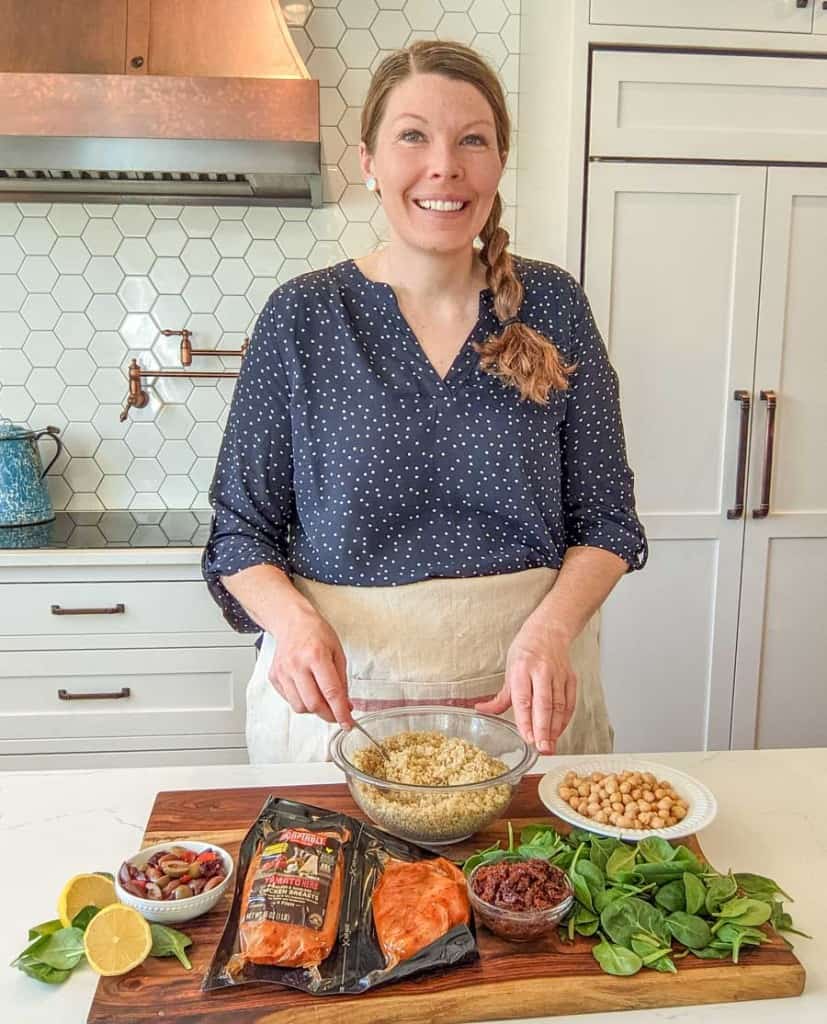
🩷 Melissa
I like to start this in the afternoon so that it’s ready to sit for its long 8-12 hour warm resting period overnight. We then wake up to fresh yogurt, and I’ll serve it with fresh fruit and some homemade granola.
This is a great way to to get organic yogurt on the cheap. You can buy a carton of organic milk and turn it into yogurt for about half the price of organic yogurt.
It is plain yogurt, but you can add honey, jams, fresh fruit, and just about anything else you like. I also use it in place of sour cream in most recipes.
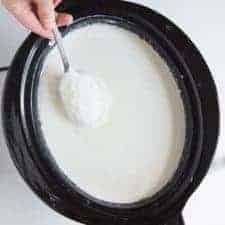
Slow Cooker Yogurt
Ingredients
- 1/2 gallon (8 cups) whole milk (you'll get a thinner product with a lower fat content milk)
- 1/2 cup commercial plain yogurt that says “Live and Active Cultures” on the tub, I have great success with Mountain High yogurt for my culture.
Instructions
- In a large crock pot, add the milk. Add the lid. Turn it on low for around 2 ½ hours.
- After that time has passed, unplug the crock pot and let it sit for 3 hours. I always set a timer for these or I don’t remember.
- After the 3 hours has passed, stir in the ½ cup of yogurt. Replace the lid of the crock pot and cover with two big towels or a blanket. Let rest for 8 to 12 hours (overnight works well). In the morning you'll have yogurt!

- Place it in a half-gallon mason jar and refrigerate for a few hours before serving. It will thicken up in the fridge. Keep a ½ cup of this yogurt for your next batch and say goodbye to buying yogurt!
- You can also let the yogurt strain in cheese cloth in the fridge for a few hours and you'll get a thicker Greek yogurt.

Video
Notes
- I highly recommend getting a little instant-read thermometer to make homemade yogurt since it’s all about the temperature.
- The goal is to scald the milk which takes place around 180°F. Check it with a thermometer the first time to see if the “warm” setting is warm enough or if maybe an hour and 45 minutes would work on low. Once you figure it out, I don’t think you would have to use the thermometer every time.
- After the milk is scalded, the waiting time is meant to bring the milk down to around 110-115°F so it’s still warm but won’t kill your yogurt culture.
- Serve with fresh fruit and granola
- Make yogurt bowls: 5 Easy Healthy Yogurt Bowl Ideas
- Homemade Fruit on the Bottom Yogurt Cups
- 4 Ingredient Healthy Strawberry Frozen Yogurt (5 minute recipe!)
- It also goes great in smoothies like my Key Lime Pie Smoothie, Strawberry Kiwi Smoothie, or Avocado Smoothie.
- Or try it in these amazing Soft and Puffy Greek Yogurt Sugar Cookies!
Nutrition
Recipe FAQs
Homemade yogurt typically stays fresh in the refrigerator for 1-2 weeks when stored in an airtight container. The flavor may become more tart over time as the cultures continue to slowly develop.
Several factors can affect thickness: using ultra-pasteurized milk, milk with lower fat content, culture that wasn’t active enough, or temperature issues during incubation. For thicker yogurt, try using whole milk, ensuring proper temperatures are maintained, or strain the finished yogurt through cheesecloth.
After your yogurt is made, simply line a fine-mesh strainer with cheesecloth, place it over a bowl, and pour in your finished yogurt. Allow it to drain in the refrigerator for 2-4 hours for a thicker Greek-style yogurt. The longer it strains, the thicker it becomes.
More Healthy Snack Recipes to Consider
Healthy Snacks
Almond Butter Protein Balls
Healthy Snacks
No-Bake Coconut Protein Balls
Healthy Snacks
No Bake Energy Bites: 25 Easy Snack Recipes
Healthy Snacks
Cherry Bliss Balls: 5-Minute Recipe For Cherry Balls
Did you make this recipe? Leave a ⭐️ review and share it on Instagram, Facebook, or Pinterest!

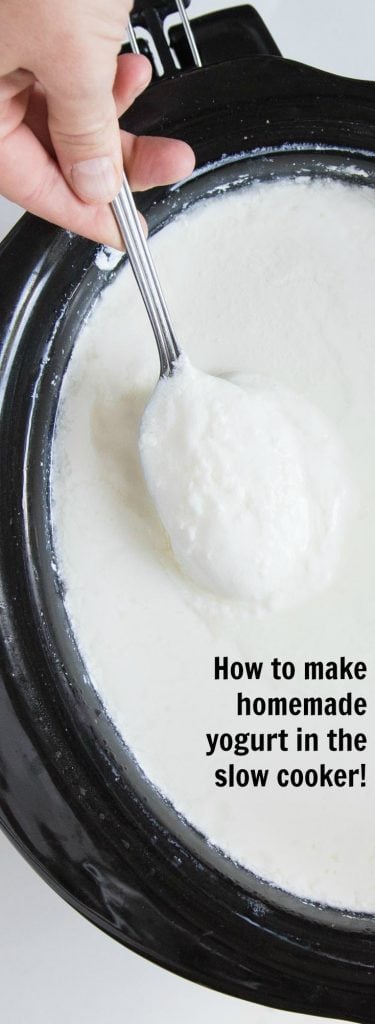
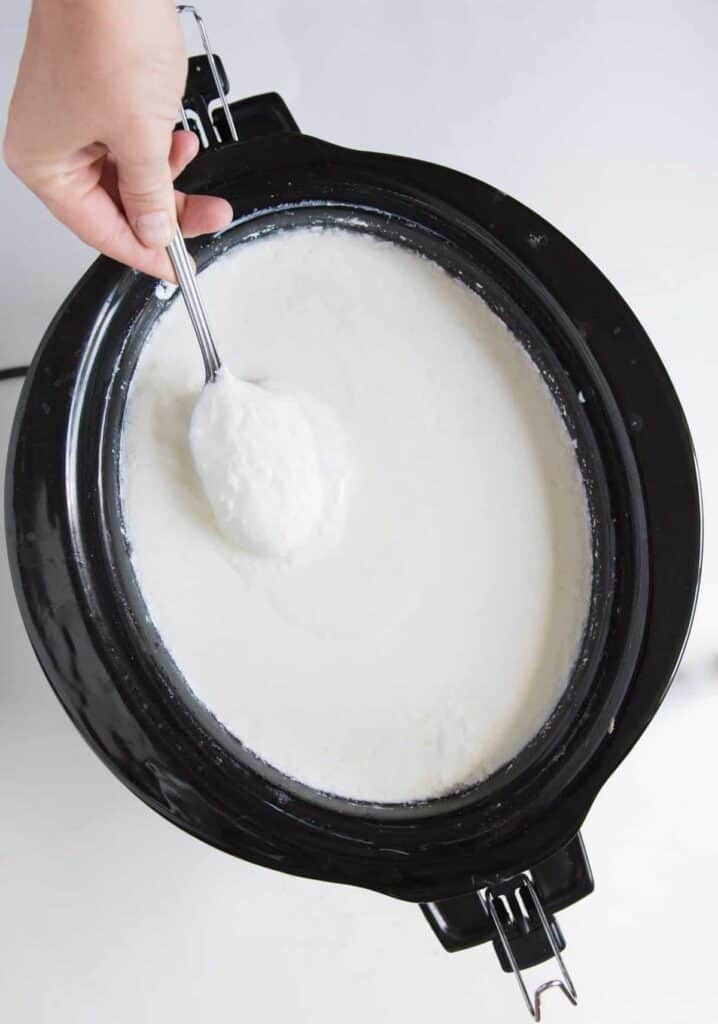

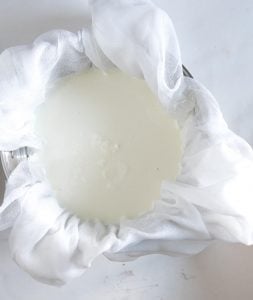
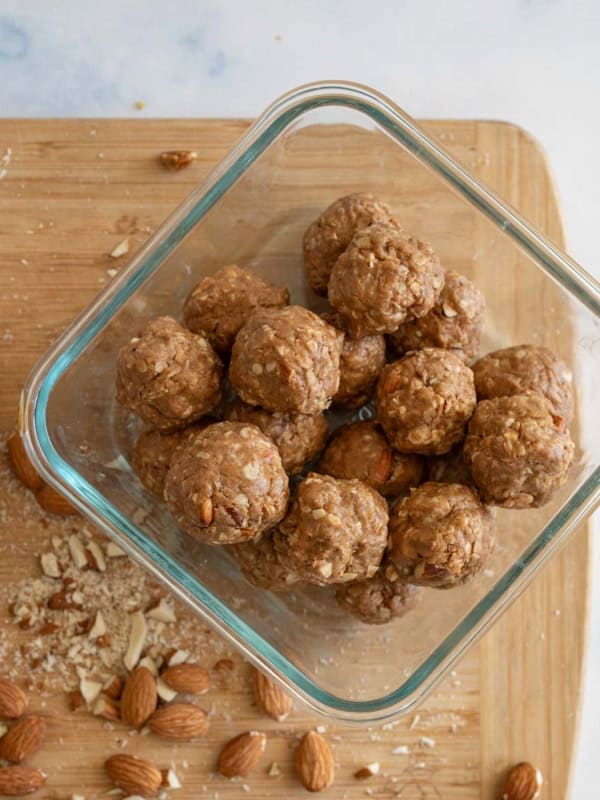
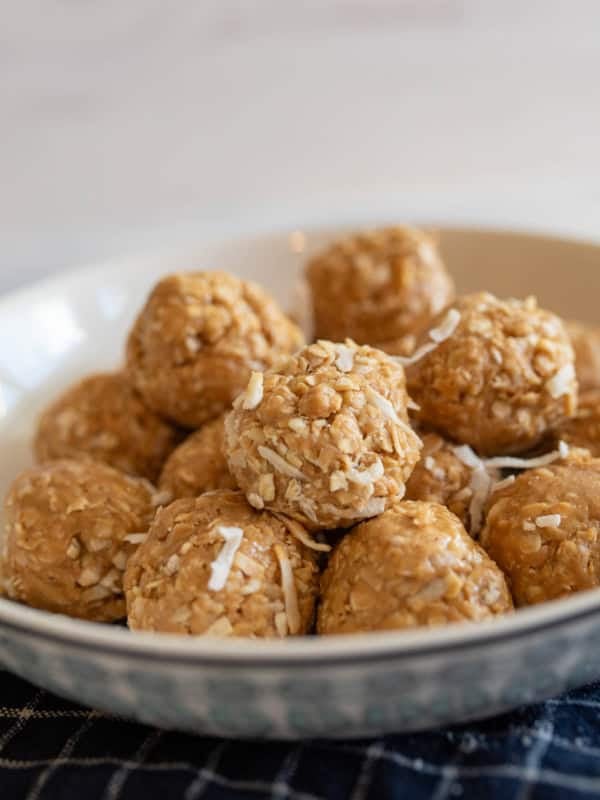
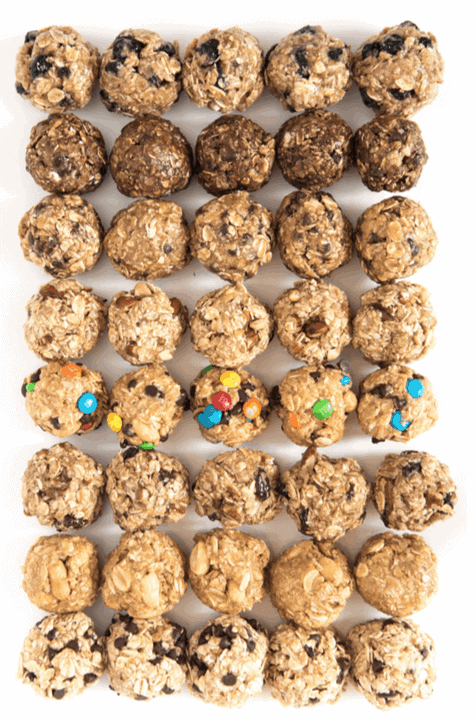
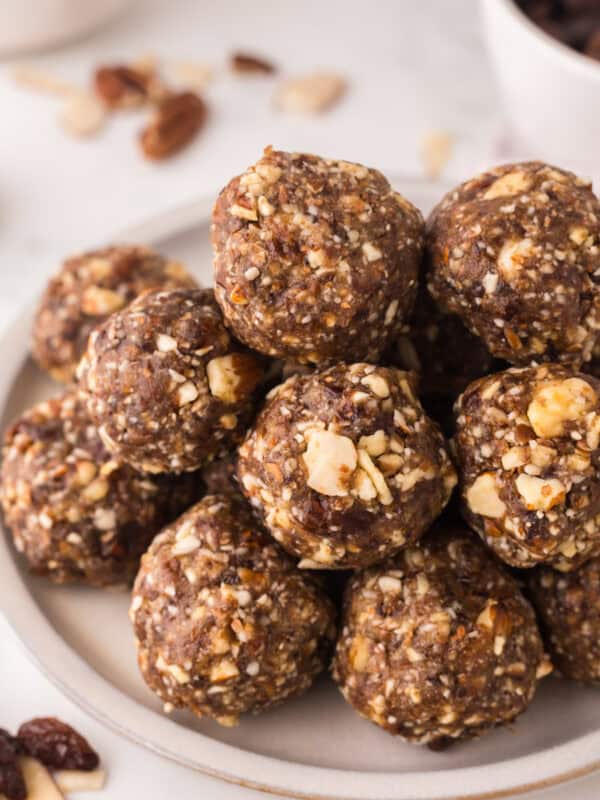






My batch turned out thin and pretty sweet. Is that normal? I was expecting some tang so I’m wondering if it failed. I used half and half and a nice organic grass fed yogurt(which was also pretty sweet). I think I added the culture at 105 so maybe my milk was too cold?
This is pretty normal. Have you put it in the fridge yet? That really helps it to firm up. And I’m surprised it is sweet! Mine is always really tart. Maybe I should find your starter 🙂
when i let it sit for 8-12 hrs do i put it in the fridge??
No, leave it wrapped up in a blanket on the counter so that the cultures from your yogurt can multiply and turn the milk into yogurt!
The whey (what drains out) is a great soup-base or addition to a soup– not really milk, and full of good things that you paid for when you bought the milk and the starter yogurt.,
Thanks for all the directions and commentary.
How do you strain it? I don’t understand that step.
I didn’t talk about that much huh! So I just like a colander with 2 or 3 layers of cheese cloth, set it in a bowl, add my yogurt to the colander, and then let it drain, covered, in the fridge, overnight. This lets the whey soak out and drain into the bowl and you’ll end up with a much thicker yogurt! Does that make sense? Let me know if you try it!
I do have a crockpot but prefer to make my yogurt in a yogurt maker….it is just simpler for me and less fuss. I use skim milk but add a 1 1/2 cups of powdered milk while bringing my milk up to the 180 degrees. I also add about 1T of agave to the mixture. I put in fridge to bring down to the 105 – 110 degrees. I then add the 1/2 cup of plain yogurt with live cultures. Place in my 8 individual cups … set the timer and when complete I put the cups in the fridge. I get nice thick yogury and can add anything I want for additional flavor. I do eat this plain most of the time. The yogurt maker was bought online through Walmart…was about $22 and well I no longer purchase yogurt and in a two person household this is just right for us.
Hi! I was so excited to make this yesterday. I checked everything with a thermometer (Up to 180, cool to 110) but this morning I don’t have anything thick that even looks like yogurt. I feel like I now have to throw away a 1/2 gallon of whole milk! Bummed. I read your comments so I must be doing something wrong. Is it to scald at 180 degrees for the whole 2.5 hours? That could have been my problem as I had my Ninja crockpot on low and added 30 minutes as it still wasn’t to 180 degrees yet after the 2.5 hours. I will try this again if I can find the answer to why I only have sour smelling milk. Thanks!
Do you know if your thermometer is right?? You can check it’s calibration by sticking it in pot of boiling water and it should read 212 degrees. I just did this a year or so ago and realized that my was off by a whopping 12 degrees (it’s a cheap one). That explains why I ruined so many batch of candy! Also, is your milk overly pasteurized? What culture did you use for your starter? I’d make cottage cheese with the milk if I were you (just search cottage cheese and you’ll find the how to on my blog). Does that help?! I sure hope so, no one like a recipe with poor results. Let me know friend!
Respectfully, you did not answer Sam’s question. Please try again. Here it is:
“scald at 180 degrees for the whole 2.5 hours?”
I came here looking for the answer to that exact answer. All the instructions here say “scold the milk” and say I should scold it at 180f but If any of them specify how long to hold at that temp, I’ve missed it and I apologize.
But would you please answer it again? Thank you.
No you don’t have to keep it at temperature for that time, you just need to get the milk up to 180 degrees and then it needs to sit without additional heat for about 2.5 hours while it cools off enough to have the starter added. So get it up to that temperature but you don’t need to maintain that temperature.
Was wondering after putting it in the jar in the fridge, will the watery stuff and the yogurt seperate enough that the yogurt will be thicker, or do you actually have to strain it to make greek yogurt?
Sometimes a bit of the whey will separate on it’s own and you can kind of dump it off, but straining really is the best option. You won’t get a true greek style yogurt with out straining it, that’s for sure. Good luck Beth!
I just tried this for the first time. It seems like it worked, however the yogurt is very very sour. 1) Is there something I can add to make it taste less sour? 2) Is there something I should do differently next time to prevent it from being so sour? Thanks!
Hey you! What kind of milk did you use? Normally the more fat the milk has in it the better the flavor. Also, you could let it sit shorter than overnight. If the yougurt is set in say 6 hours then you could put it in the fridge and slow down the cultures that are making the yogurt. Hope that helps!
Could I replace the whole milk with raw goat milk?
Yep, but after cooking it won’t be raw 🙂 I have done it with raw milk though it was excellent!
I found you site through Pinterst. I love it! I started the crock pot yogurt yesterday. It turned out pretty watery but am hoping it will thicken up in the fridge. I can’t wait to make the granola and other recipes. Thank you for sharing!
Can you use almond or coconut milk in place of the dairy milk?
I don’t think so but I really don’t know…